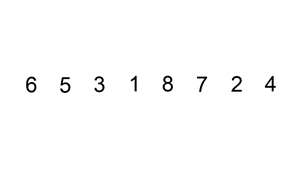Download resources(files or web pages) by using curl command.
Environment and Prerequisite
- Linux base system
- Bash shell(/bin/bash)
- Usage of curl command
About curl command
curl: It stands forClient URL. It is a tool to transfer data from or to a server, using one of the supported protocols- The command is designed to work without user interaction. It supports many protocols and methods also with many options.
- Supported Protocols: DICT, FILE, FTP, FTPS, GOPHER, HTTP, HTTPS, IMAP, IMAPS, LDAP, LDAPS, POP3, POP3S, RTMP, RTSP, SCP, SFTP, SMB, SMBS, SMTP, SMTPS, TELNET, TFTP and ETC.
Download resource using curl command
(Method 1) Use -o or –output option
- These options only support download to current working directory.
curl [URL] -o [RESOURCE_NAME]
or
curl [URL] --output [RESOURCE_NAME]
(Method 2) Use redirection
- You can download resource to any directory.
curl [URL] > [RESOURCE_NAME_WITH_PATH]
Example: Download cirros image using curl command
Requirements
- Site link: https://download.cirros-cloud.net/0.4.0/
- File link: https://download.cirros-cloud.net/0.4.0/cirros-0.4.0-x86_64-disk.img
- md5sum: 443b7623e27ecf03dc9e01ee93f67afe
- Reason for checking md5sum hash is for checking file is transferred well with no corruption.
(Method 1) Use -o or –output option
- Download file
curl https://download.cirros-cloud.net/0.4.0/cirros-0.4.0-x86_64-disk.img -o cirros-0.4.0-x86_64-disk.img
- Check MD5 hash value
- MD5 hash value could be different depends on OS.
$ md5sum cirros-0.4.0-x86_64-disk.img
443b7623e27ecf03dc9e01ee93f67afe cirros-0.4.0-x86_64-disk.img
(Method 2) Use redirection
- Download file
curl https://download.cirros-cloud.net/0.4.0/cirros-0.4.0-x86_64-disk.img > /home/twpower/test/cirros-0.4.0-x86_64-disk.img
- Check MD5 hash value
- MD5 hash value could be different depends on OS.
$ md5sum /home/twpower/test/cirros-0.4.0-x86_64-disk.img
443b7623e27ecf03dc9e01ee93f67afe






